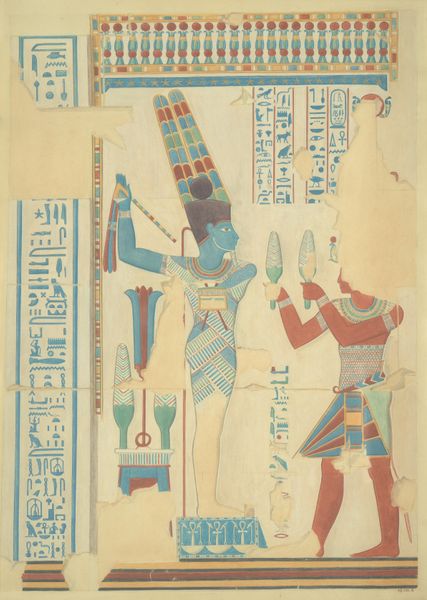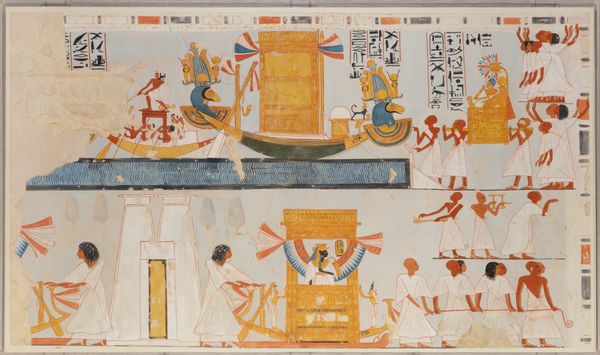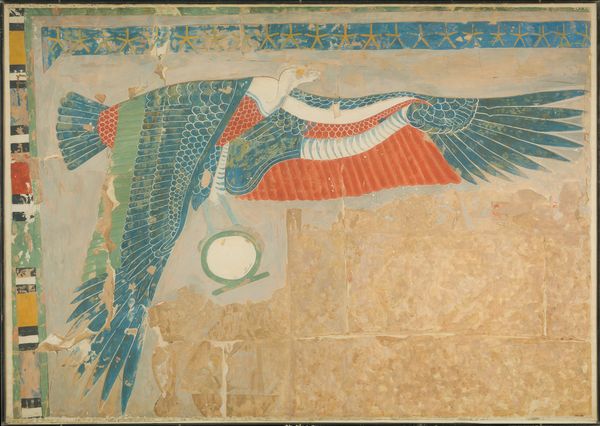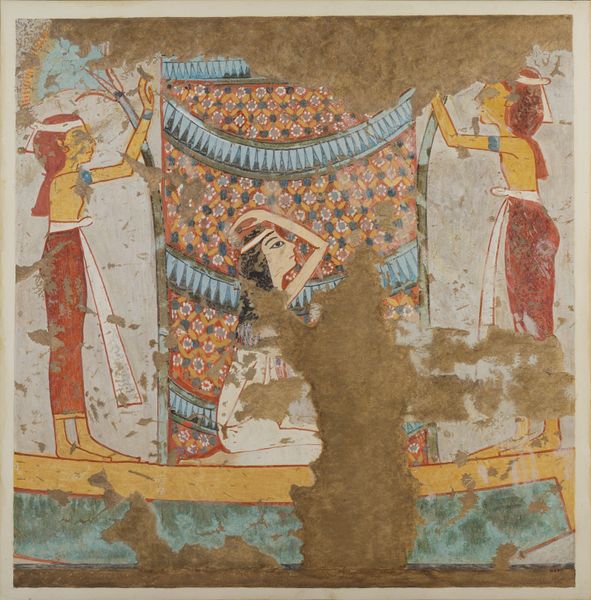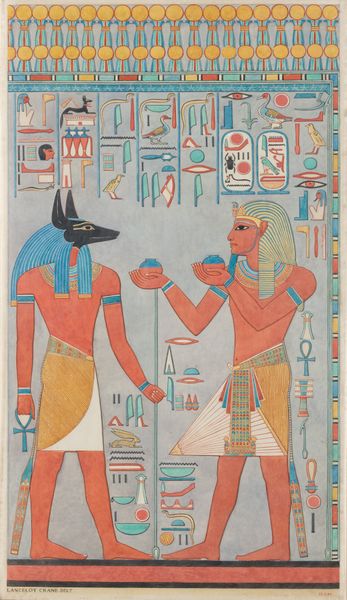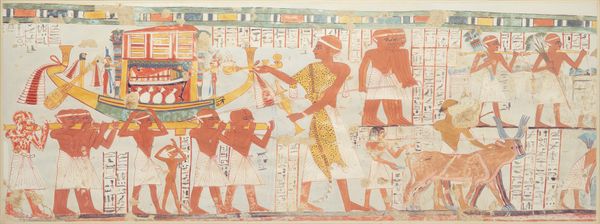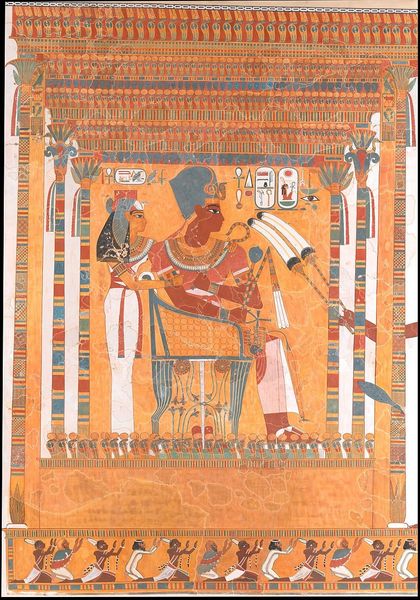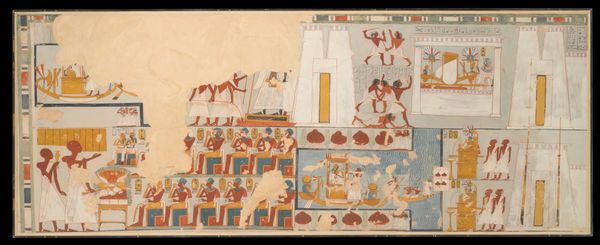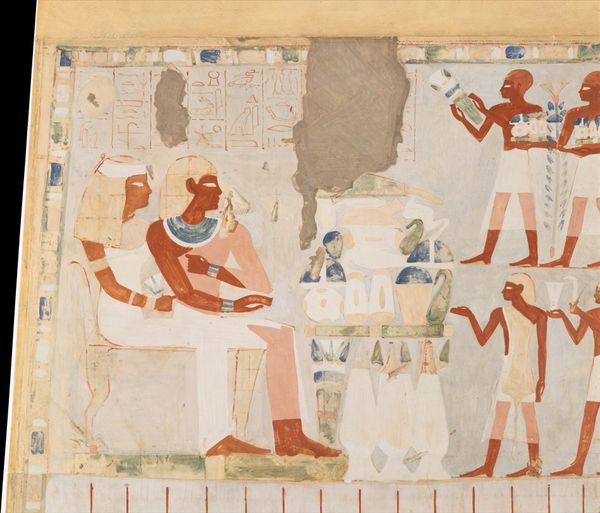
Seth Slaying a Serpent, Temple of Amun at Hibis 521 BC
0:00
0:00
tempera, mural
#
tempera
#
ancient-egyptian-art
#
pastel colours
#
figuration
#
egypt
#
ancient-mediterranean
#
wall painting
#
history-painting
#
mural
Dimensions: facsimile: h. 45 cm (17 11/16 in); w. 36 cm (14 3 16 in); scale 1:5; framed: h. 41.3 cm (16 1/4 in); w. 40 cm (15 3/4 in)
Copyright: Public Domain
Charles K. Wilkinson made this watercolor and pencil facsimile of “Seth Slaying a Serpent” at the Temple of Amun in Hibis. The composition immediately strikes us with its vibrant colors and symbolic arrangement of figures. Seth, rendered in a striking blue, dominates the scene, poised to strike a serpent that coils beneath him. The use of color here is far from arbitrary; blue, associated with the sky and divinity, elevates Seth, while the serpent, in earthy tones, represents chaos and the earthly realm. Wilkinson masterfully captures the original relief’s structure and form, emphasizing the linear quality of the hieroglyphs above and the intricate detailing of Seth's attire. This attention to detail is not merely representational but interpretive. The artwork sets up a binary between order and chaos, good and evil, which is structurally reinforced through the dynamic opposition of the figures. Ultimately, this piece invites us to consider how ancient Egyptian art used form and structure to convey complex theological and cultural narratives, and how these elements continue to speak across millennia.
Comments
No comments
Be the first to comment and join the conversation on the ultimate creative platform.

